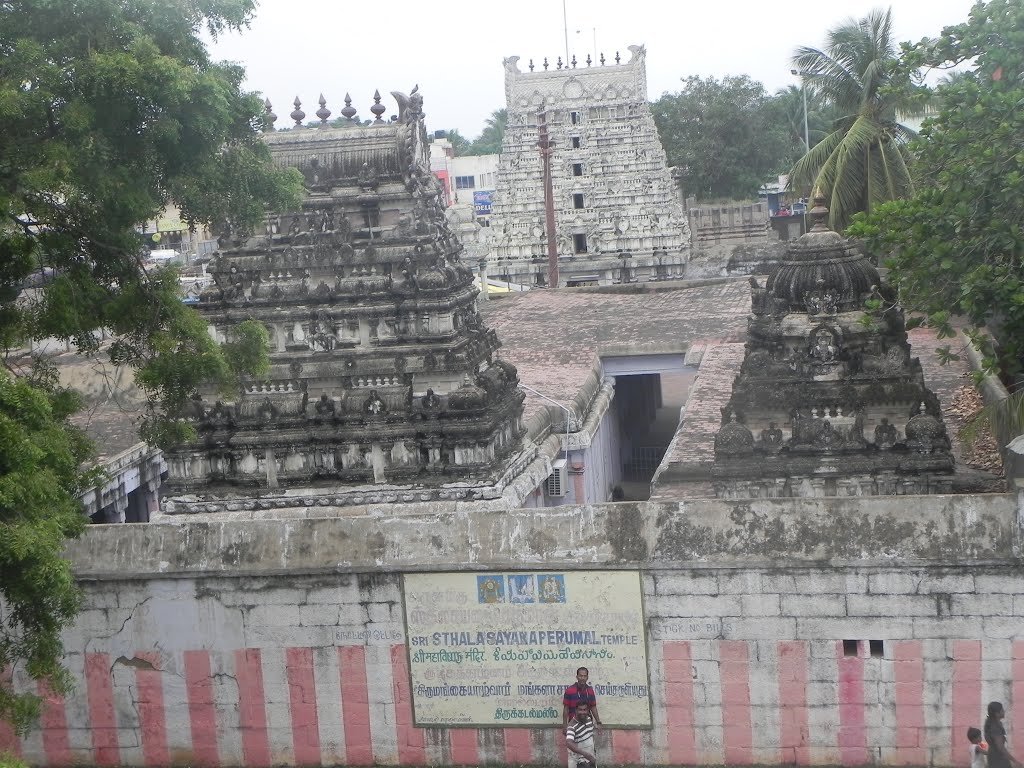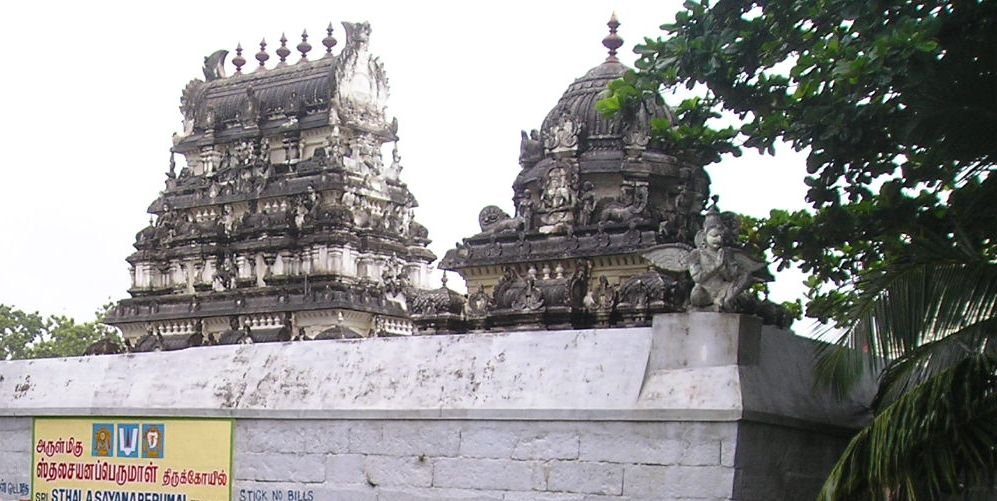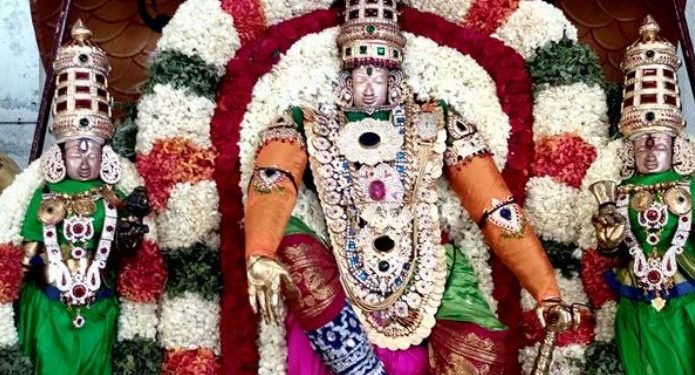Sthalasayana Perumal Temple also called Thirukadalmallai. It is one of the 108 Divyadesam dedicated to Vishnu,who is worshipped as Sthalasayana Perumal and his consort Lakshmi as Nilamangai Thayar. The temple is believed to have been built by Pallavas,with later contributions from Medieval Cholas,Vijayanagar kings and Madurai Nayaks.

Legends Associated with This Shrine
As per Hindu legend, once sage Pundarika was performing penance worshipping Vishnu at this place. He collected Tamarasa flowers and submitted it to view Vishnu in Ksirabdhi Natha form, his posture in Tirupaarkadal. He collected 1,008 flowers and in his intensity, he scooped out water also in full. Vishnu came in disguise in the form of sage and asked him for food. The sage went to acquire food for the old man, but while returning he found that Vishnu remained in the place. Since Vishnu stayed in this place, he was called Sthalasayana Perumal.The legend is sanctified by Bhoothatazhwar in his verses in Nalayira Divya Prabandham.
As per another legend, a king by name Harikesarivarman used to visit the Nithyakalyana Perumal temple at Thiruvidandai every day from Mahabalipuram and wanted to settle there. Vishnu was pleased by his devotion and appeared as Sthalasayana Perumal at Mahabalipuram.

Architectural Relevance of This Shrine
The temple stands on the shore and it was built along with the other sculptures. It is a small temple with two major Shrines for Lord Sthalasayana Perumal and Nilamangai Thayaar. This is believed to be the birthplace of Bhoothathazhwar, the 2nd Azhwar. There is also a separate shrine for Lord Narasimha. The architecture depicts the Pallava style. This shrine was built by Pallava kings. Bhoothathazhwar was found in a tank that is opposite to the temple. The place is also famous for its Adivaraha shrine near the seashore, where the Lord is known as “Valavendai Gnanapiran” or the Lord having His Consort on His right side, unlike other places with His Consort on the left side like the nearby Thiruvidaventhai Divya Desam.
It is believed that there were originally seven temples built in the place, out of which only one is remaining. The festival deity is sported with a lotus bud in the hand, while the presiding deity is seen displaying Jnana Mudra.During the 14th century, the Vijayanagar king Parankusa shifted the temple to its current location away from the shore. He is believed to have built the four Mada streets around the temple. The temple also had expansions by Chola king Vikrama Chola during 1120 CE.
Shrine’s Map Location and How to Go There
By Road
The city of Kanchipuram is well connected with the other part of the states and it is few km from the Quadrilateral National Highway. There are frequent bus services from Chennai and it takes 2- 3 hours to reach. The Chennai Metropolitan and the state express transport operate the services.
By Rail
Kanchipuram is connected with the southern part of the rail network and few trains are running through Kanchipuram. Suburban trains are running between Kanchipuram and Chennai beach on specified intervals.
By Air
Chennai, the nearest international airport, is situated around 75 km away from Kanchipuram. Both public and private transport facilities are available at the airport.
Shrine Timings
7 A.M to 10 P.M
Events Celebrated at This Shrine
Bhoothathazhwar Avata Utsavam October or November
Navarathiri Festival September or October
Diwali Festival October or November
Extra Information About this Shrine
Nearby Temple
Kanchi Kamakshi Devi Temple
Kailasanadhar Temple
Sri Simha Dhakshinamoorthi Vyagrapuriswarar Temple
Madambakkam Sri Lakshmi Narayana Perumal Temple
Vaikunda Perumal Temple













































